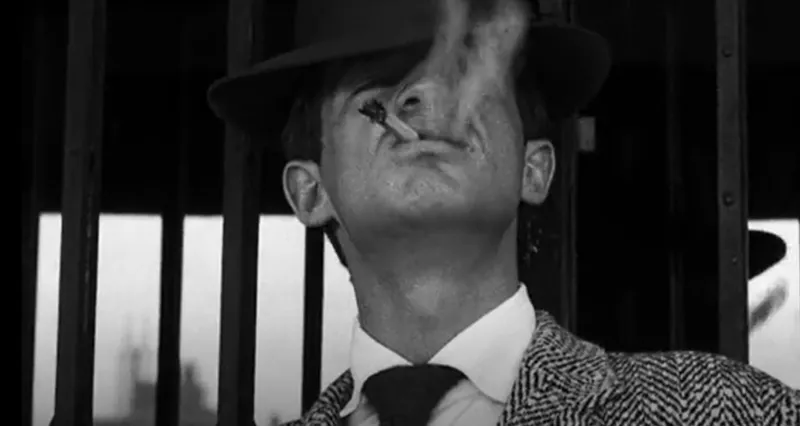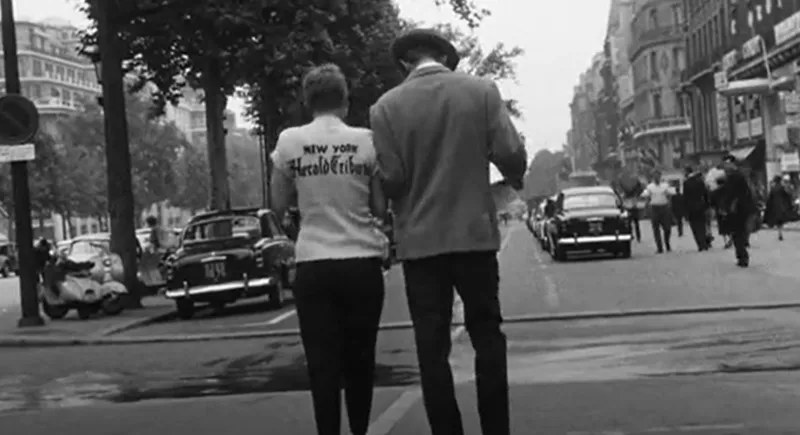Remembering a sleepy afternoon with Jean Luc Godard
Jean Luc Godard was a French film critic and director, accredited famously as the person who flagged off the French New Wave film movement. He passed away on September 13, 2022.
The first time I watched Jean Luc Godard’s Breathless was against my will.
It was in college. In a dark, air-conditioned room on the fifth floor, with half of my classmates falling asleep—unabashedly, due to lack of ‘supervision’—I remember feeling like I was watching something important.
Of course, for a 90’s kid who mostly grew up on Hollywood movies, I didn’t “get it” immediately. Breathless felt like a noir gone wrong. But we had assignments based on the movie, and I had to re-watch this jerky, emotionless hour-and-a-half long video essay full of random, perfunctory dialogues, non-sequiturs, and the most extended scene of a man running away after getting shot I’d ever seen.
As an art aficionado (and a media student), I’d read about Godard and his role in the Nouvelle Vague—the French New Wave film movement—before I watched Breathless. But the theory and impact of Godard, and what I was watching unfold on the screen in classroom 501 that day, didn’t somehow compute.
Later, I realised—as many who watch and fall in love with Godard do—that was the whole point of this film.
After five to six back-to-back viewings, it occurred to me that Godard wasn’t keen on impressing anyone with Breathless. He wasn’t trying to get you—the viewer—to enjoy the film, invest in the storyline or the characters, or approve of the aesthetics of his cinematography and edits.

A still from Godard's Breathless
If anything, the film felt less like your run-of-the-mill crime/romance movie and more like a commentary. It was making a point, and it wanted you to get to it, brick by brick.
You come away from Breathless confounded and confused because that is the intention behind it. The film keeps trying to find itself throughout the runtime — some scenes are documentary, hand-held style; some are dark, close-ups of the main characters, straight out of a noir.
The bedroom scenes with the two main characters feel like they fell straight out of a typical Romantic. The endless scenes of the story’s antagonist—a fedorad Michele—looking out at nothing, a cigarette dangling from his lips, rubbing his lips like his idol Humphrey Bogart, or the iconic scene where he shoots a police officer—the sequence never betraying the identity of the policeman—felt lifted out of a Western classic.
It was like Breathless was trying to be purposefully redolent of Hollywood movies rather than be inspired by them on an artistic plane. At the same time, it seemed to reject the traditional filmmaking process with its jump cuts, almost spoofing stereotypical Hollywood movies insolently.
My conclusions weren’t specious either. Before donning the hat of a director, the French filmmaker was first and foremost a film critic—a very prolific one at that. He started his career writing for Cahiers du Cinema, a famous and well-regarded French film magazine.
Godard’s debut movie, A Bout de Souffle (Breathless), came around two decades after the end of World War II. By that time, Amercian movies had flooded France, having been given a free hand to export “cultural products” after it cancelled France’s $2 billion war debt.
Godard and his ilk grew up on a steady diet of American classics, and saw, first-hand, how French film slowly whittled down into a very diluted version of itself.
No surprise then that Godard’s debut movie felt like a comment, a parody of American cinema—almost critiquing American Westerns and noirs. But, at the same time, trying to find what it was on its own.

A still from Godard's Breathless
Breathless flagged off the French New Wave film movement in a lot of ways by breaking from the convention for iconoclasm, and rejecting everything that made filmmaking a big “production” of sorts.
With his second film, Le Petit Soldat (The Little Soldier)—released much later due to censorship issues—Godard continued to question, poke, and prod his subject matter—war—and that quickly emerged as his unique style.
He broke away from Structure, infamously believing that a “film consists of a beginning, a middle, and an end, though not necessarily in that order,” and treated his movies more like self-interrogation.
His subsequent films followed in the same vein as Breathless—they weren’t entertainment, but vehicles for an existential inquest, supplications to the spirit of inquisitiveness, and opportunities to turn the camera onto itself.
For me, Godard symbolised the lacerating duality between the narratives of the victor and the vanquished. His camera’s scepticism of the truth grilled into me the importance of not taking things at their face value and going beyond the subtext.
His insight into the human condition, and the way his camera captured it, taught me why recasting our perspective, once in a while, is important. He showed me how breaking formats to stay true to oneself could sometimes result in happy accidents worth celebrating.
‘There was before Breathless, and there was after Breathless.’
Godard died as he lived—mired in the realities of life. He died by assisted suicide in Switzerland on September 13, 2022, exercising his individuality for one last time.
A spokesperson told media outlets that he was suffering from multiple serious illnesses, while French media reported that a relative of Godard said he chose euthanasia because “he was tired of life”.
Godard’s death—like his life and his movies—sparked much discussion around doctor-assisted suicide in western countries.

A still from Godard's Breathless
French President Emmanuel Macron has said there will be a public debate on legalising euthanasia in France—an issue part of his re-election campaign. The European country’s national ethics committee even went as far as to say that it is open to the terminally ill receiving “active” help in dying.
Back home, India has had its journey with assisted suicide following the Aruna Shanbaug case. In 2018, the Supreme Court of India legalised passive euthanasia, saying patients, who are terminally ill or in a vegetative state, must consent to passive euthanasia through a living will.
In its landmark judgement, the SC held that the right to die with dignity is a fundamental right of every Indian citizen, and that “dying is a part of the process of living”.
“Living people are often already dead,” Godard said famously. However, his life spent creating art, upending anachronisms, and relating the truth as he saw it in “24 frames per second” was far from death.
From the sleepy classroom on the fifth floor to now, my worldview has changed, and with it, my understanding of what Godard urged his viewers to go away with from his cinema. Art or not, his is an important legacy that far outlives his mortal death.
Edited by Suman Singh







